Eagle rays are close relatives of sharks from the Elasmobranchii family. They are in the main family of rays which includes the well-known manta rays, its larger cousin. After diving with both of them, the spotted one remains my favorite. So let’s dive in and find out more about the eagle rays and why I love them so much.
My encounter with spotted eagle rays
It was just another normal diving day when during our surface interval another dive boat approached us. Eagles rays there, one of the divers shouted pointing to another dive spot.
It didn’t take much convincing for us to agree to change our dive plan to go and try our luck.
Once in the water, the current was crazy, but within a minute in our descent, we stroke gold! We only saw once to start with, not to say that it was more than enough. When diving for spotted eagle rays. the trick is to look up and not down. When doing that, we saw another group from afar. Our air was dropping low very quickly due to fighting the current, but we had to go. There, one hand holding the camera and the other grabbing a rock, I entered another world.
Watching spotted eagle rays fly and glide in the ocean is breathtaking. The way they move is impressive and elegant but most of all it is the way they don’t move that really blew my mind. Just like a bird gliding through the air stream, the eagle rays glide through the water current.
Needless to say that you do not even realize that your air supply is getting into reserves and a tap on the shoulder brings you back to reality. A sad reality that it is time to go.
Why are they called eagle rays?
Eagle rays have an elongated beak-like face that they use for foraging in the sand. This plus the fact that it looks like they fly in the water using their powerful fins is the reason for their names. Spotted eagle rays get their names from the white spots on their backs and are the largest of their family.
When you see one of them, there is no question asked. They distinguish themselves easily from any other rays.
I have to admit that it is those white spots on their backs and their elegance that really makes them my favorite!
Are eagle rays, stingrays?
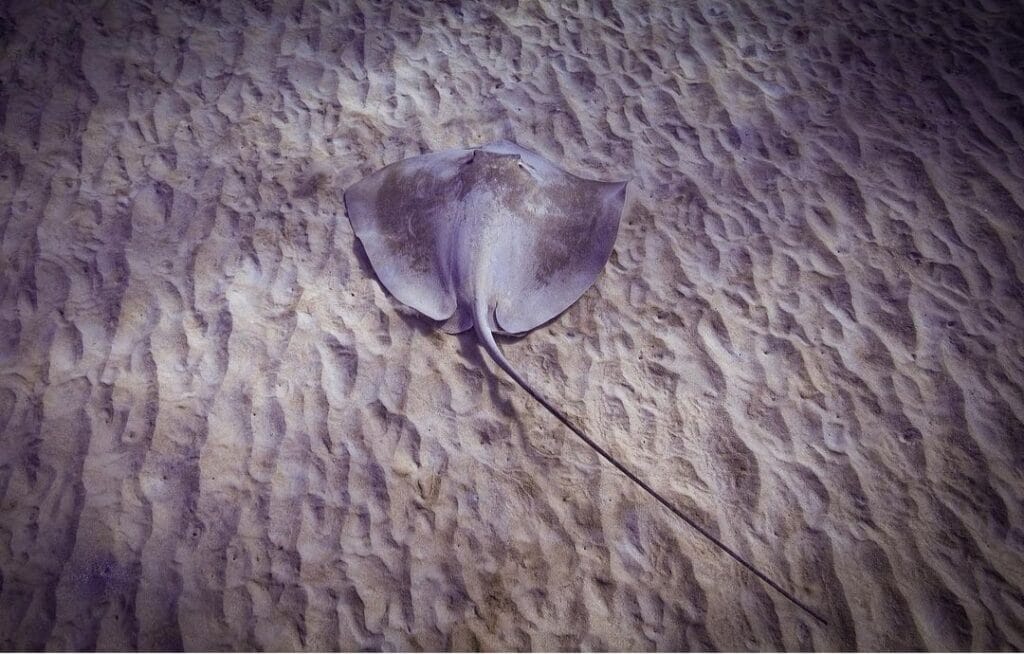
They are from the family of rays and more specifically the stingray family. With a wingspan that can reach 3 meters, they are the second-largest rays behind the mantas. The mantas on the other side are not part of the stingray family as they do not have a ‘sting’ or ‘barb’.
Another noticeable factor from our spotted friends is that compared to their peers, they remain in constant movement. Thus the fact that it is easier to find them looking up the water column than down.
Are eagle rays dangerous?
Far from that; rays are really shy animals. They are often scared off, like other fish, by the bubbles that divers produce when breathing underwater. Keep in mind though, that just like other stingrays, they have a venomous barb stinger on their back, at the start of their tail.
An encounter in the wild is a blessing and just as with any wild animals, you have to give them their space. One of the fundamental rules of diving is not to chase; this rule should be applied to all activities at sea.
What do they eat?
Eagle rays have a very peculiar diet. They mainly eat mollusks and crustaceans like shrimps, oysters, clams, and sea urchins. They are often found their beaks in the sand looking for food. Once they find something to eat, they use their flattened teeth to crush the shells.
Best places to spot them in Mauritius?
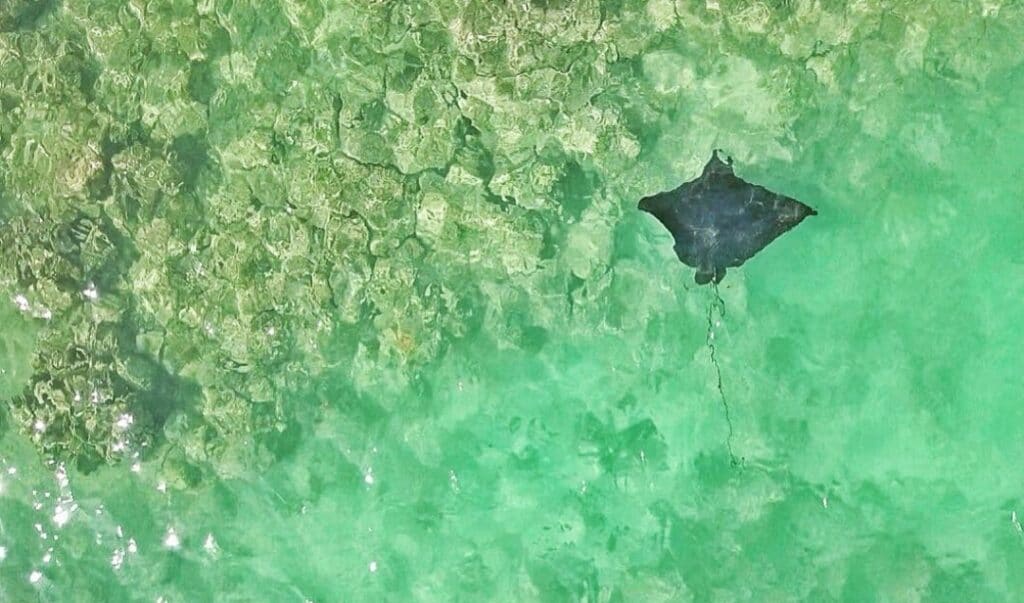
The best place to find them in my opinion is on the west coast of Mauritius, though they can be found pretty much anywhere. They are often found in bays and coral reefs and can be found cruising close to the shore.
I have seen them a few times in the north of the island as well. Though not in big numbers and more than often just a single one gliding by. They are generally not found in groups in any case but when you see them on the west coast, it is often in large numbers.
A little bit of trivia
Did you know that the sawfish and guitarfish are also classified as rays? The guitarfish has been on my wishlist since I started diving and there is a specific dive spot in the north of Mauritius where you can find them. But guess what? I have never seen one in more than 10 dives. Wish me luck in finding one! I really need it!
I can’t say that I am not lucky though, I had the chance to already see so much amazing marine life. Check out my post about my first liveaboard experience where I dive in the nature reserve of Tubbataha.

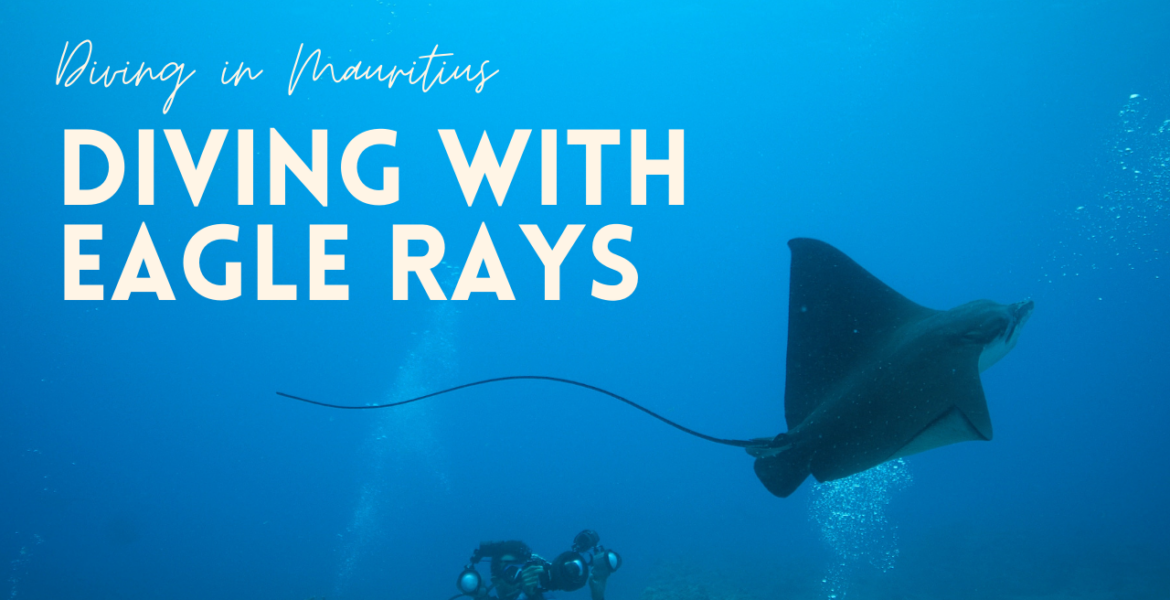
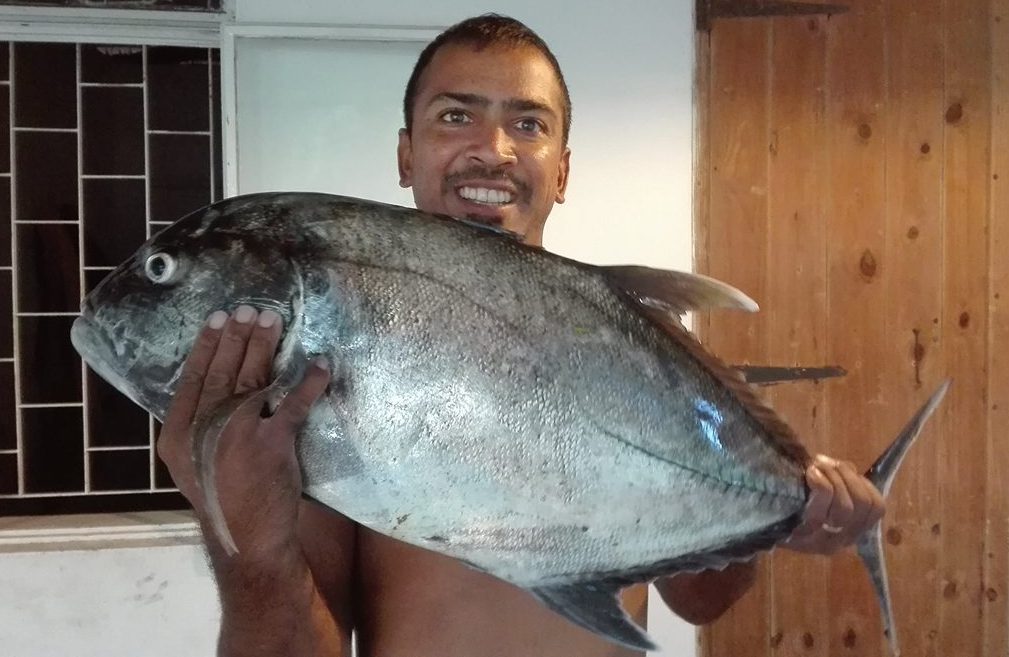
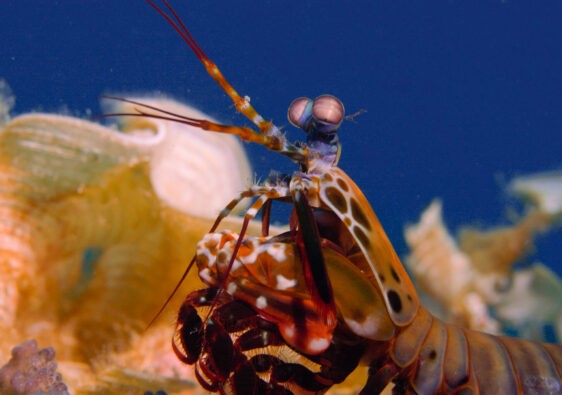


Simply wish to say your article is as astonishing. The clearness of your put-up is just spectacular and I can assume you are knowledgeable on this subject.
Hello my friend! I wish to say that this article is awesome, nicely written and comes with all significant infos.
[…] eagle rays (OceanVibration) […]